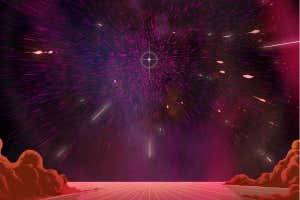The Daily Observer London Desk: Reporter- John Furner
Interstellar space may seem like unbroken nothingness, but thanks partly to the Voyager probes, we’re getting many new insights into this region’s exotic chemistry, strange waves and vast bubbles
Joe Wilson
The jokes came easily for Thomas Bania when he began studying the properties of the empty space beyond our solar system. “I remember the look on my father’s face when I was in graduate school,” he says. “I told him I was an expert in nothing.”
Most of us can see why Bania’s dad hesitated over his son’s choice of specialism. The exciting bits of the universe are the shining stars, the exotic planets, the icy comets. Isn’t interstellar space just a featureless void – and so far away as to be tough to study anyway?
Not so. All the atoms in the universe’s stars and planets account for only a piffling 4 per cent of its regular matter. The rest is spread out thinly in the gaps between the stars, in interstellar and intergalactic space. By that measure, what we normally think of as “empty space” isn’t nothing – it is almost everything.
Over the past decade or so, researchers like Bania have been showing that interstellar space is deeply fascinating. This so-called nothingness is brimming with exotic molecules, pulsating with radio waves and divided into gigantic bubbles, each with their own character. Now, as we are beginning to map out our place within the void more keenly, we are coming to see that this variety matters immensely – and that as the solar system heads towards a new region of interstellar space, there could be important ramifications for life on Earth.
We are used to living in a thick soup of atmosphere. In a cubic centimetre of air, a volume the size of a …



